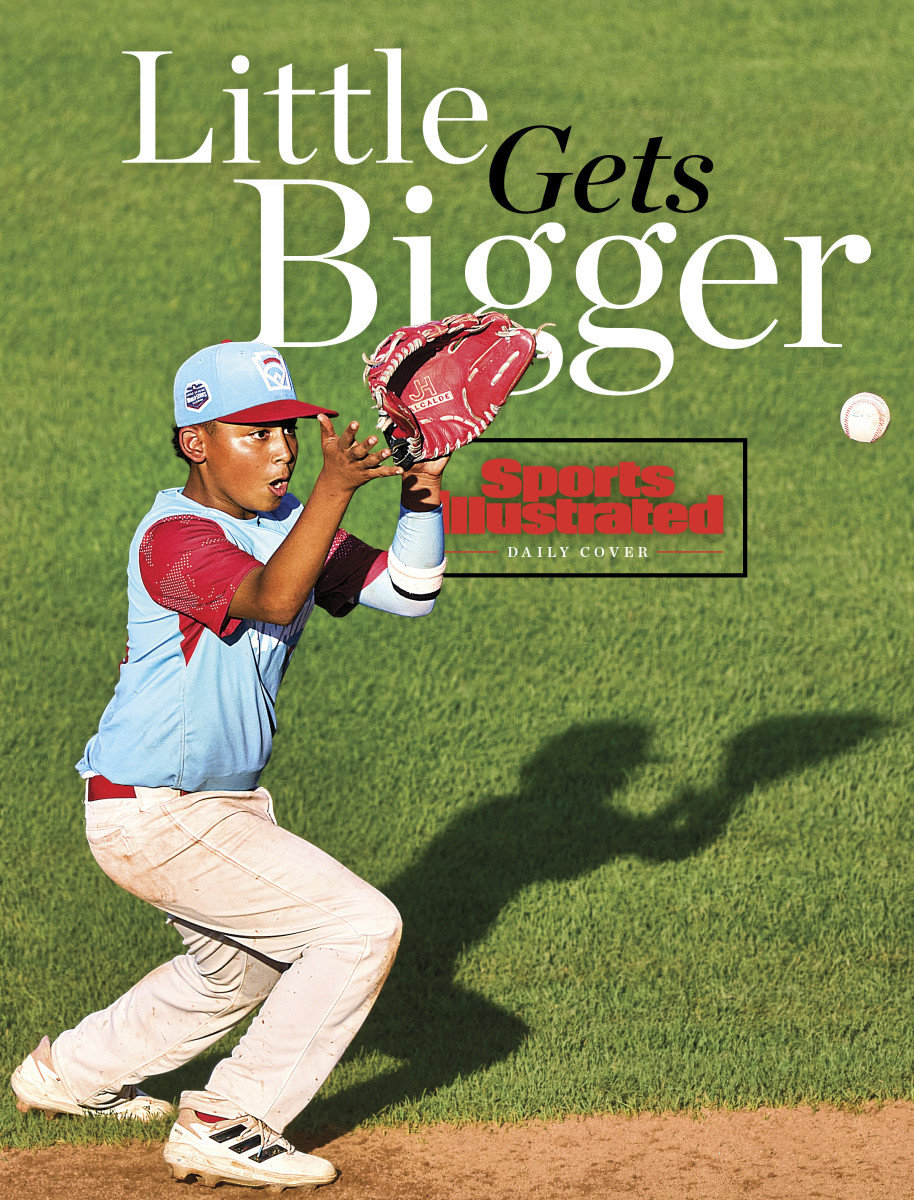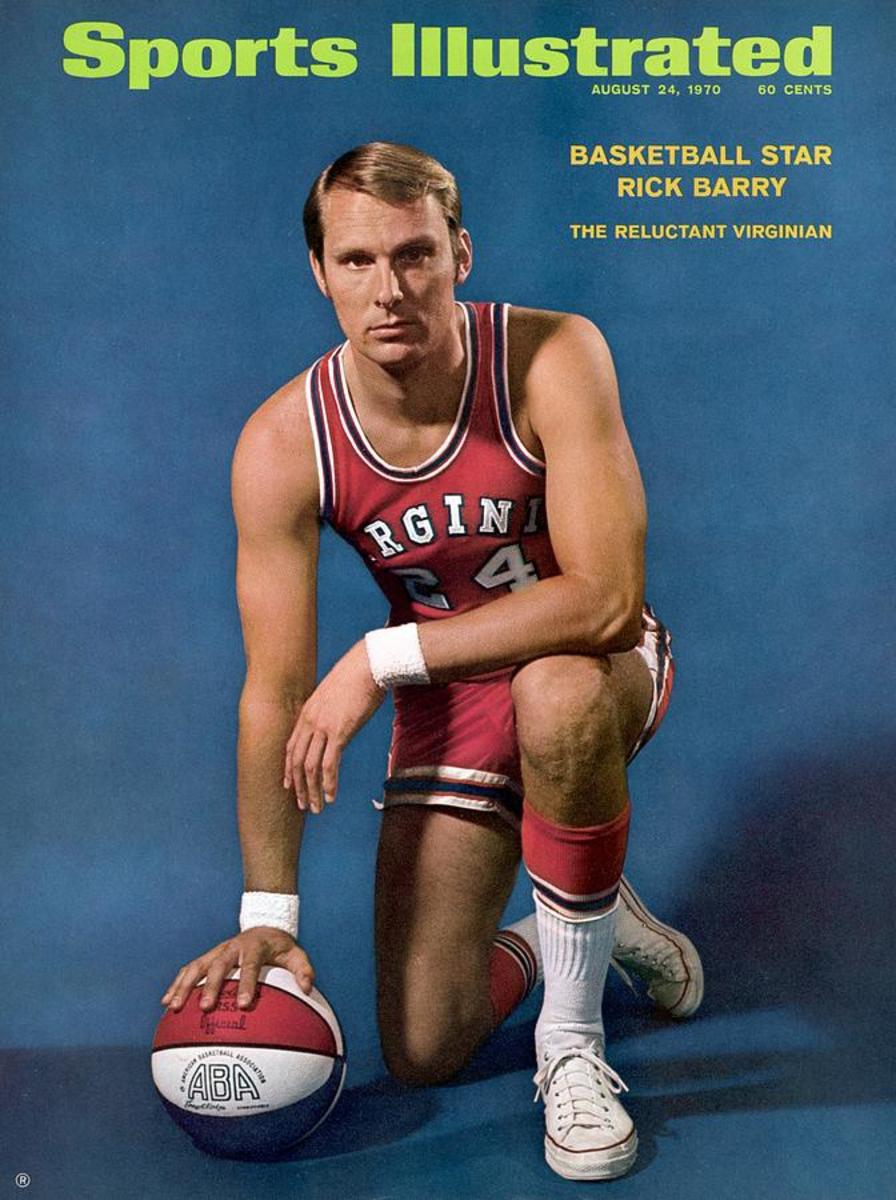SI:AM | So Much for Kevin Durant’s Ultimatum
Good morning, I’m Dan Gartland. The Nets are going to be a mess this year.
In today’s SI:AM:
⚾ The Little League World Series gets bigger
🏈 Pat Forde on the college QBs to watch
If you're reading this on SI.com, you can sign up to get this free newsletter in your inbox each weekday at SI.com/newsletters.
More questions than answers for KD and the Nets
Since Kevin Durant requested a trade from the Nets on June 30, negotiations moved about as quickly as rush-hour traffic on the Brooklyn-Queens Expressway. The ultimatum he reportedly gave the team earlier this month—choose between me and the combo of GM Sean Marks and coach Steve Nash—made it seem like, even though no serious suitors had emerged, KD would still likely be playing elsewhere come October.
But then the Nets announced yesterday, after a meeting with Durant and his agent in Los Angeles, that the two sides decided to “move forward with our partnership.” So that settles it, right? Not exactly. Durant may have agreed to stay on the roster, but the situation in Brooklyn is still in flux. Here’s how Rohan Nadkarni sees it:
What seems more likely: Kevin Durant sat down with [team owner] Joe Tsai, Sean Marks and Steve Nash and hashed out all the issues he had with the team during one conversation, including his trade request, his reiteration of that trade request, and asking for Marks and Nash to be fired? Or both sides realized they don’t really have a better option than their current setup?
A Durant trade, as Nadkarni points out, would have been nearly impossible to pull off. He’s such a transcendent player that there’s no way the Nets could receive anything close to equal value in return, so why would they cave and make a trade that undoubtedly makes them orders of magnitude worse? And at the same time, Durant has four years left on his contract. He has no leverage to force his way elsewhere. Reconciliation—reluctant or not—always seemed like the most likely outcome.
But it’s impossible to ignore that Durant attempted to force his way out of town. The question is: Why did he try it? “What is it, exactly, that Durant wants?” Chris Herring asks:
Is it to have things completely on his terms? Is it to play with one of his closest friends, and have [Kyrie] Irving’s back, regardless of how costly his choices were? Is it to win at the highest level? (Looking at sheer talent alone, Brooklyn’s roster still has enough to accomplish this, by the way. But who knows how this team will jell, or what drama will ultimately come.) Or is it some combination of the three?
The Irving situation is the factor worth paying the most attention to here. Remember, KD’s trade request came immediately after the Nets declined to offer Irving the long-term extension he was looking for. In fact, news of Durant’s trade request was quickly followed by a report from The Athletic’s Shams Charania (the guy most of the developments in this story have been filtered through) that Durant and Irving wanted to continue playing together with a new team. Durant evidently feels like Nets management isn’t respecting his close friend, but KD’s unwavering support for Irving, after his refusal to get the COVID-19 vaccine derailed Brooklyn’s season, is also troublesome. Herring writes that it “raises questions about Durant’s leadership and explains why Brooklyn asserted more control here. Can he support a coach and general manager if he feels more compelled to back a teammate that isn’t fully committed?”
Yesterday’s news means that the Nets can go forward into next season with their roster set. But even with the blockbuster trade talk shut down, there is still plenty of uncertainty surrounding this team. Irving is playing on an expiring contract, so this could very well be his final season in Brooklyn. He could even get traded midseason. How would Durant react to that? And then there’s the Ben Simmons question. After missing all of last season, when will he be ready to come back—and when he does, how will he be integrated into the team? Even without trade rumors swirling, it’s shaping up to be a tumultuous year in Brooklyn.
The best of Sports Illustrated

In today’s Daily Cover, Matt Martell writes about how the Little League World Series is growing as it marks its 75th anniversary.
Pat Forde ranked the 25 most intriguing quarterbacks in college football this season—with reigning Heisman winner Bryce Young at No. 2. … Jeremy Woo has an early look at the top prospects in next year’s NBA draft. … Stephanie Apstein spoke with some Yankees players to learn the superstitions they’re leaning on to try to pull out of their skid. … The latest episode of SI Weekly features two stories from Emma Baccellieri—one about relievers entering bench-clearing brawls and the other about the Dodger Dog.
Around the sports world
Hall of Fame quarterback Len Dawson has died. … Fernando Tatis Jr. addressed the media for the first time since his PED suspension. … The NCAA women’s basketball championship game will air on ABC for the first time next year. … Nick Saban isn’t leaving Alabama any time soon. He just signed a contract extension. … Wizards and Capitals owner Ted Leonsis is reportedly interested in buying the Nationals. … Angels fans can rejoice. Arte Moreno is considering selling the team. … Dodgers pitcher Walker Buehler underwent Tommy John surgery for the second time in his career.
The top five...
… things I saw yesterday:
5. This funky basket in the Liberty-Sky game.
4. Justin Verlander’s strong outing for the Astros (six innings, 10 strikeouts, no hits, no walks, no runs).
3. This long home run at the Little League World Series.
2. Aaron Judge’s 48th home run of the season.
1. Bryce Harper’s two-homer night in his first rehab game in Triple A.
SIQ
Who scored the most points for the U.S. Olympic team in the men’s gold medal basketball game on this day in 2008?
Yesterday’s SIQ: On Aug. 23, 1953, Phil Paine became the first major leaguer to pitch professionally in which country?
- Japan
- South Korea
- Mexico
- Cuba
Answer: Japan. Paine made his major league debut for the Boston Braves in 1951 and then was drafted into the Army during the Korean War, putting his baseball career on hold.
After basic training, Paine was sent to Camp Drake, in Fukuoka, Japan, where he joined the camp’s baseball team. In 1953, he signed with the city’s Japanese Pacific Coast League team, the Nishitetsu Lions, and pitched on his days off from military service, twice a week. He was paid $575 per game, or about $6,300 today.
Paine, who had been primarily a reliever in the U.S., mostly started for the Lions. He made nine appearances (eight starts) and threw five complete games, including one shutout. He had a 1.77 ERA and 38 strikeouts in 61 innings.
Paine’s greatest contribution in Japan was something else, though. During his time at Camp Drake, Paine was reunited with George Ducharme, his former high school teammate in Rhode Island. Paine lobbied for Ducharme to get a spot on the camp’s baseball team, thus preventing him from getting sent to Korea with the rest of his unit. Ducharme told Society for American Baseball Research biographer Nelson “Chip” Greene that he believes Paine’s recommendation saved his life:
In an interview in 2010 Ducharme told a poignant story: After he was drafted he too was sent to Camp Drake and was reunited with Paine. At the time, Camp Drake was an athletic powerhouse among the military branches, and Paine was the star pitcher on the camp’s baseball team. When Ducharme arrived, Paine told the Drake coaches about his former teammate’s baseball talents and recommended that he be assigned to the team. Subsequently, Ducharme’s unit was sent to Korea, where war was still raging, but as a member of the baseball team Ducharme remained behind. All but seven or eight of his unit were eventually killed in the fighting, but, he said, “because Phil Paine got me on the team, I survived and was able to live the life I have led. I’ll always be grateful to Paine for that. Without him, I probably would have been killed with the rest of my unit.”
Paine returned to the U.S. in 1954 and pitched in 11 games for the Braves, who by that time had relocated to Milwaukee. He rounded out his big league career in ’58 with the Cardinals and pitched three more years in Triple A. He died of a brain tumor in ’78 at age 47.
From the Vault: Aug. 24, 1970

Rick Barry was no stranger to court proceedings by the time the 1970 basketball season rolled around.
In 1967, fresh off leading the NBA in scoring with 35.6 points per game, Barry jumped from the Warriors to the ABA’s Oakland Oaks as a result of a dispute with San Francisco owner Franklin Mieuli—only the Warriors didn’t let him go. At the time, NBA players were subject to the same “reserve clause” that MLB and NFL players were. The clause, famously challenged by St. Louis Cardinals outfielder Curt Flood in ’70, allowed NBA teams to renew players’ contracts perpetually under a series of one-year options. Barry was the first to challenge the reserve clause in court, two years before Flood, when the Warriors exercised their option for the ’67–68 season. A court ruled in favor of the Warriors, though, and Barry was not allowed to join the Oaks until the next season.
When Barry finally got his wish to join the ABA team across the Bay, it didn’t go as he had hoped. A knee injury limited him to just 35 games in his first season. Even without Barry, the Oaks went 60–18 and won the ABA finals in five games over the Indiana Pacers. But as successful as they were on the court, the Oaks were losing money in Oakland. So the team was sold to a lawyer from Washington, D.C., who moved it there. Barry didn’t want to leave Northern California and actually signed a new contract with the Warriors in August 1969, a five-year, $1 million deal that would go into effect once his ABA obligations were complete.
Barry reluctantly played for the new Washington Caps in the 1969–70 season, but when the team was relocated and became the Virginia Squires, Barry was fed up. He pursued every possible avenue to avoid playing for the Squires, which is where Peter Carry’s cover story picks up:
Barry wants to stay in San Francisco mainly because of the life-style, which for him and his wife Pam and two young children includes an $18,900 Ferrari and a spectacular house on the side of a hill overlooking a valley east of Oakland. “I would never have considered going to the ABA if I had thought I would have to leave this area,” Barry says. “Earl [Foreman, the owner of the Squires] apparently thinks he can offer me enough money so that I’ll be happy to go. I don’t know if I’d be happier in Norfolk or wherever the hell it is even if he gave me $1 million a year. I’m very lucky, I live better than all but a very small percentage of people in the country now. How much better can I live?”
Barry was especially hesitant to live in the South.
“My son Scooter is supposed to go to nursery school this year,” he told Carry. “I hate to think of the complications that’ll cause in Virginia. I don’t want him to go down there to school and learn to speak with a Southern accent. He’ll come home from school saying, ‘Hi yall, Daad.’ I sure don’t want that.”
Before long, Barry got his wish—sort of. Foreman traded him to the New York Nets on Sept. 1. It wasn’t the Bay Area, but at least it wasn’t the South.
Check out more of SI’s archives and historic images at vault.si.com.
Sports Illustrated may receive compensation for some links to products and services on this website.
